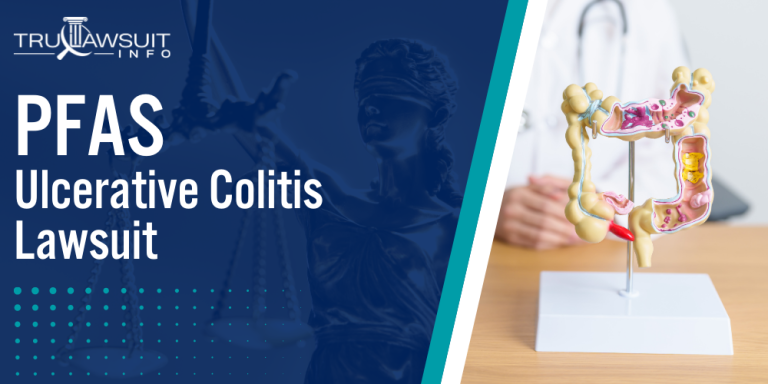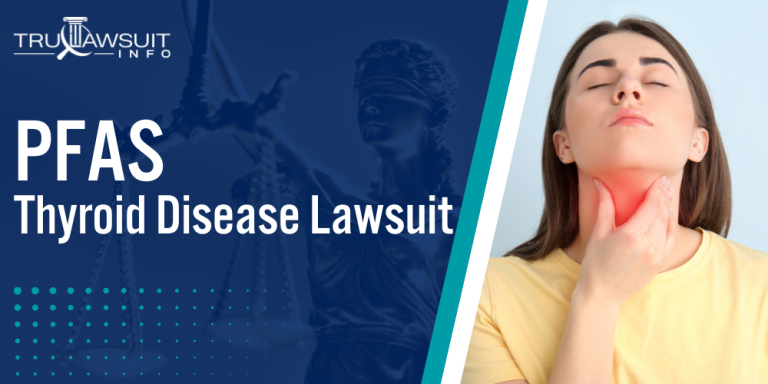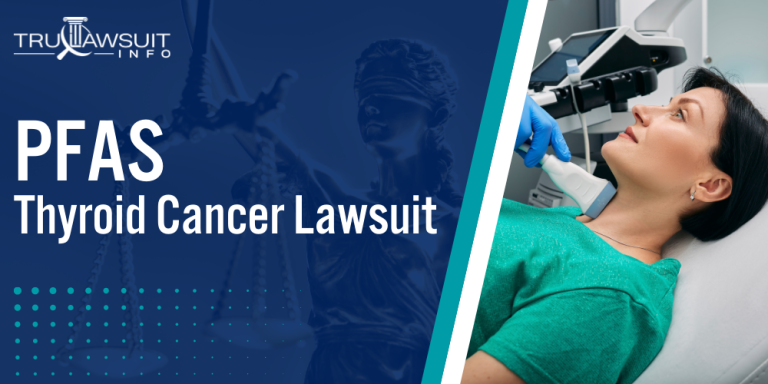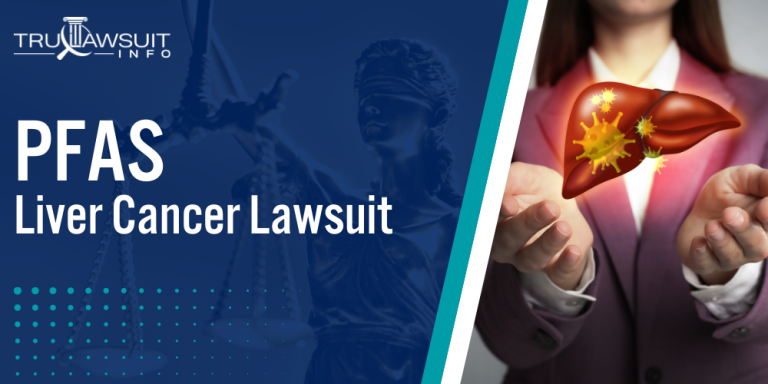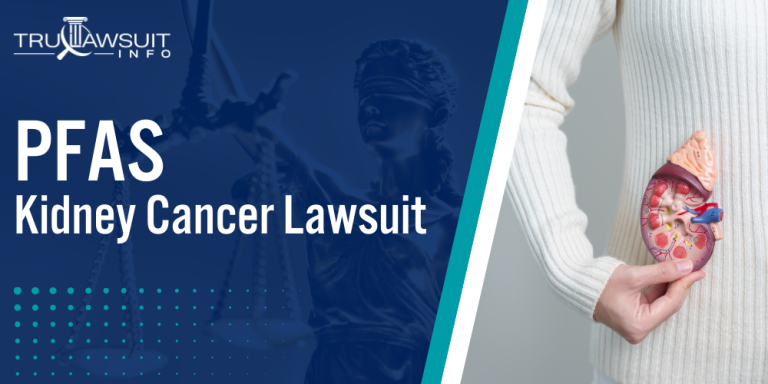FAQ: Is There a Class Action PCB Lawsuit? [2023 Guide]
Key Takeaways:
- Monsanto, a major producer of PCBs, faces numerous lawsuits due to contamination and health risks associated with their products. These lawsuits involve cities like Chicago and Baltimore seeking financial recovery for cleanup efforts.
- A significant class action settlement has been reached in which Monsanto agrees to pay $550 million to resolve claims over water contamination from PCBs, particularly impacting municipal governments.
- Health risks linked to exposure to PCBs include skin conditions, liver damage, thyroid problems, neurological changes, and increased cancer risk. EPA safety standards are often exceeded in various environments, such as schools and public buildings.
FAQ: Is There A Class Action PCB Lawsuit? [2023 Guide]
Question: Is there a class action PCB lawsuit in 2023?
Answer: Yes, there is a PCB lawsuit against Monsanto regarding the presence of PCBs. The PCB lawsuit has been certified as a class action, and a settlement has been reached. Monsanto has agreed to pay up to $550 million in compensation for property damage caused by PCB contamination.
Intro to the PCB Lawsuit Class Action Settlement
On this page, we’ll discuss this question in further depth, an overview of what the class action PCB lawsuit is, the nature of the settlement and much more.
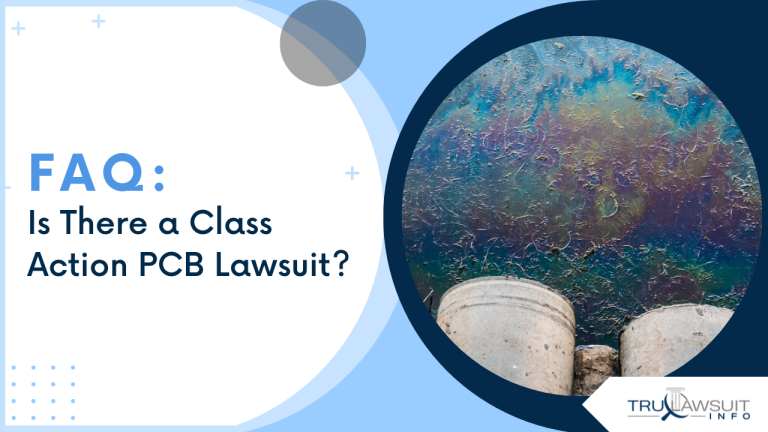
Settlement class members of the PCB lawsuit can apply for payment from these funds.
If you or a loved one has experienced adverse health conditions after being exposed to PCB chemicals, contact TruLawsuit Info today using the chat on this page to receive an instant case evaluation.
Table of Contents
What is a PCB, and How is Monsanto Involved?
Discover the nature of Polychlorinated Biphenyls (PCBs), a group of man-made organic chemicals, and unravel the controversial history of agricultural giant Monsanto’s role in their widespread production that has led to increasing environmental and health concerns.
Definining the PCB Lawsuit
Polychlorinated biphenyls, or PCBs for short, are synthetic chemicals that have a specific structure with carbon, hydrogen, and chlorine.
They became popular because they can handle high heat and pressure without breaking down.
This made PCBs ideal for electrical equipment like transformers and capacitors.
However, these tough attributes also mean that PCBs don’t break down easily in the environment.
Electrical manufacturers heavily relied on these compounds until researchers found out how harmful they could be to natural resources and human health.
Their durability turned into a daunting challenge when it came to managing PCB contamination in soil, air, and water systems.
With such concerns looming large over their legacy use, tackling the presence of these highly toxic substances has become critical in environmental protection efforts around the world.
Monsanto’s Involvement in the PCB Lawsuit
Monsanto played a pivotal role in the manufacturing and distributing PCBs (polychlorinated biphenyls), which are now recognized as toxic chemicals.
For decades, the company was the primary producer of these substances used widely in electrical transformers, hydraulic fluids, and other industrial products.
Despite mounting evidence confirming that PCBs posed serious health risks, Monsanto continued to produce them until 1977.
This was two years prior to the EPA’s ban, indicating an understanding within the organization about the potential dangers long before they ceased production.
The legacy of Monsanto’s actions with regard to PCB pollution still affects numerous environments and communities today.
Cities such as Chicago and Baltimore have filed lawsuits alleging that Monsanto knowingly contaminated air, water bodies, and soil with these dangerous substances.
The PCB lawsuit aims to recover remediation costs while holding Monsanto accountable for environmental protection violations and human health hazards stemming from their manufactured PCB-containing products.
Discussing legal actions against Monsanto provides further insight into how deeply this issue has impacted society.
Legal Actions Against Monsanto for PCB Contamination
The extensive legal battles against Monsanto due to its production of polychlorinated biphenyls (PCBs) have highlighted significant issues regarding corporate accountability and environmental protection.
These lawsuits reflect the broader implications of industrial activities on public health and the environment.
PCB Lawsuit: Monsanto’s PCB Production
Monsanto’s history with PCBs, marked by decades of production and subsequent legal confrontations, underscores the complexities of industrial responsibility and environmental health.
The company’s role in the widespread use of these chemicals has led to significant legal and environmental repercussions:
- Sole Manufacturer: Monsanto was the only producer of PCBs in the U.S. from 1935 to 1977.
- Uses in Industry: PCBs were used in construction, caulking, electronic insulation, and other applications.
- Health and Environmental Concerns: The ban on PCBs in the late 1970s was due to their link to cancer, birth defects, and other serious health issues.
PCB Lawsuit: Legal Verdicts and Settlements
Recent legal outcomes against Monsanto for PCB contamination have been groundbreaking, both in terms of the compensation awarded and the legal precedents set.
These cases highlight the legal ramifications of the PCB lawsuit:
- Washington State School Case: A $857 million verdict for health issues caused by PCBs in school light fixtures.
- Washington State Environmental Recovery: A $95 million settlement for environmental damages caused by PCBs.
- Nationwide Class Action Settlement: Over 2,500 entities involved in a $550 million settlement for PCB contamination.
Statewide Legal Actions and Allegations
The legal actions taken by various states against Monsanto reveal the extensive nature of PCB contamination and the challenges in seeking justice and remediation.
These cases have brought to light the alleged negligence and concealment by Monsanto in the PCB lawsuit:
- New Hampshire Lawsuit: Lawsuit for PCB contamination affecting over 63,000 acres of waters and harming wildlife.
- Allegations of Concealment: Evidence suggests Monsanto was aware of PCB toxicity but concealed information.
Monsanto’s Defense: PCB Lawsuit
In response to the numerous filings in the PCB lawsuit, Monsanto, now part of Bayer AG, has articulated a defense strategy focused on its historical compliance with regulations and distancing from direct contamination incidents.
This defense reflects the complexities of legal accountability in environmental cases.
- Bayer’s Defense: Bayer asserts Monsanto ceased PCB production lawfully over 40 years ago.
- Business Restructuring: Monsanto split into Solutia and Pharmacia, with lawsuits naming these spin-offs alongside Monsanto.
Implications of PCB Lawsuit Actions
The legal actions against Monsanto for PCB contamination carry far-reaching implications for corporate environmental responsibility and public health.
These cases are emblematic of the evolving landscape of environmental law and corporate accountability:
- Corporate Accountability: The lawsuits mark a significant shift towards holding corporations responsible for environmental harm.
- Environmental and Health Impacts: Highlighting the extensive environmental and health ramifications of PCB contamination.
- Financial and Legal Repercussions: Monsanto faces substantial financial liabilities, influencing corporate practices in environmental stewardship.
The PCB lawsuit against Monsanto underscores the need to address environmental harm and the responsibility of corporations to protect public health and the environment.
Understanding the PCB Lawsuit
Navigating the complex case of the PCB lawsuit requires a thorough understanding of potential risks, whether environmental, personal injury-related or pertaining to indemnification clauses.
It’s essential for stakeholders to grasp these aspects to manage and anticipate legal challenges in PCB cases effectively.
Environmental Impairment: PCB Lawsuit
Environmental impairment litigation often deals with pollutants that harm the natural environment, including waterways and land.
Companies accused of causing such damage can face lawsuits from government entities, organizations, or individuals demanding cleanup efforts and compensation for damages.
In cases where PCBs are involved, these legal battles focus on addressing contamination caused by polychlorinated biphenyls (PCBs), which have been found to decline in the environment yet still present a significant risk.
Cases against Monsanto concerning PCB contamination highlight the complexities of environmental law.
Plaintiffs claim that Monsanto’s production and distribution of PCB-containing products led to widespread ecological damage requiring extensive remediation efforts.
These litigations aim not only to hold responsible parties accountable but also to secure funds for testing and removing harmful substances from affected areas, ensuring public safety and environmental health are prioritized.
Personal Injury and Building Litigation
Teachers are taking a stand, filing personal injury lawsuits against Monsanto due to the health risks from PCB exposure.
The PCB lawsuit claims that Monsanto’s PCBs and related products were defectively designed, posing significant dangers.
Concerned about neurological damage and reproductive toxicity, educators argue that long-term exposure in school buildings has compromised their health.
Litigation extends beyond personal harm; it targets the contamination of buildings where PCB-containing products were used.
As plaintiffs seek accountability for environmental impairment and safeguarding public health, enforcing indemnification agreements becomes essential.
This focus on legal responsibility will set a precedent for future cases involving toxic substances like polychlorinated biphenyls (PCBs).
Moving forward, this issue segues into enforcing indemnification agreements—an intricate part of understanding how liabilities are managed in such complex legal battles.
Enforcing indemnification agreements
Enforcing indemnification agreements is a critical move for companies to shield themselves from financial harm linked with PCB litigation.
The company aims to offload potential legal liabilities and safeguard its interests by holding former customers accountable.
This strategy is detailed in the Form 10-K reports, where you can find comprehensive business analysis and statements regarding such risks related to ongoing and future lawsuits.
Agreements like these are made between two parties, generally stipulating that one will cover the costs of certain damages or legal claims brought against the other.
In this context, it’s a robust defensive maneuver by businesses involved in PCB-related activities; they are effectively ensuring that past clients bear responsibility if they contributed to contamination or used products in ways leading to legal action.
This highlights how important it is for all involved entities – potentially including schools or environmental protection agencies – to fully understand their roles and responsibilities within these agreements.
Moving forward, awareness of potential health risks associated with Monsanto PCB contamination becomes vital as both individuals and organizations navigate through the complexities of environmental laws and their own safety protocols.
Potential Health Risks Associated with the PCB Lawsuit
Exposure to Monsanto’s PCBs has been linked to significant health concerns.
This comprehensive guide provides in-depth insights into these potential dangers.
EPA Exposure Limits Frequently Exceeded
The presence of PCBs in our environment is a growing concern, especially given their persistence and bioaccumulative nature.
Environmental and health agencies have set limits, but these are often exceeded in various settings, leading to potential health risks.
Exceeding the EPA’s exposure limits presents several specific risks:
- High Levels of PCBs in Environments: Studies indicate PCB levels in some environments far exceed the Environmental Protection Agency’s safety standards.
- Notable Findings: Investigations have found public buildings with caulking containing over 200,000 parts per million of PCBs, significantly higher than EPA guidelines.
- Risk to Children and Adults: Regular activities in these facilities might lead to prolonged contact with contaminated materials, posing a risk to unaware individuals.
- Regulatory Challenges: Despite efforts to control PCB contamination, high concentrations are still detected, presenting serious health risks.
It is essential for those potentially exposed to seek expert advice on legal recourse against parties like Monsanto.
Health Risks for Workers Exposed to PCBs
Workers regularly exposed to PCBs are often unaware of the insidious nature of these chemicals, which can accumulate in the body over time, leading to various health issues.
The risks are particularly acute in industrial settings where PCB use was once prevalent.
Workers in direct contact with PCBs may face various health challenges due to their exposure:
- Skin Conditions: Regular handling of PCB-laden materials often leads to skin issues.
- Severe Health Impacts: Prolonged exposure can result in liver damage and thyroid problems.
- Mental Health Effects: There are reports of mood and memory function changes among exposed workers.
- Cancer Risk: The National Institute for Occupational Safety and Health classifies PCBs as potential occupational carcinogens.
Employees in environments with polychlorinated biphenyls should be aware of these risks and take precautions to avoid exposure.
Where PCBs are Commonly Found
Polychlorinated biphenyls (PCBs), once ubiquitous in various industrial applications, persist in many environments long after their ban, including waterways and aging infrastructures; continue reading to uncover the specific locales where PCBs might still linger and pose risks.
Rivers and streams
Rivers and streams have turned into critical sites of concern in the battle against PCB contamination.
As these waterways carry water across vast landscapes, they collect pollutants from industrial activities, including polychlorinated biphenyls (PCBs).
This leads to widespread environmental impacts, with wildlife and communities along these rivers bearing the brunt of toxic exposure.
States are taking action by suing companies to recover damages for this pollution and safeguard public health.
PCB exposure through contaminated water has prompted guidance on stringent regulations aimed at cleanup and containment.
Given that many Burlington School District buildings may harbor materials laced with PCBs, addressing this issue is vital for ensuring safe environments for students and staff alike.
Education about how to avoid consuming PCB-contaminated food or using products containing these harmful chemicals is crucial as legal battles continue to unfold against entities like Monsanto who allegedly sold PCBs fully aware of their potential harms.
Schools and other buildings
Polychlorinated biphenyls (PCBs), once prevalent in construction materials, linger in many older school buildings and other structures, posing health risks for those inside.
Particularly troubling is the presence of PCBs in schools where children and staff spend significant amounts of time.
Evidence shows that building occupants could be exposed to these toxins through air or contact with PCB-containing materials like caulk or paint.
In response to this threat, actions such as Vermont’s lawsuit are aiming to secure funds for testing and remediation efforts in educational facilities.
Remediation strategies have been developed, focusing on identifying areas at high risk and managing them effectively to reduce exposure levels.
These steps are vital for ensuring safer environments for students and teachers alike.
Moving forward, understanding legal updates regarding Monsanto PCB settlements becomes essential for staying informed about ongoing litigation efforts.
PCB Lawsuit: Legal Updates and Settlement Information
The legal landscape of the PCB lawsuit has seen several significant developments, particularly involving settlements between plaintiffs and companies like Monsanto, now owned by Bayer AG.
The PCB lawsuit settlements reflect the seriousness of the allegations and provide insight into the potential outcomes of ongoing and future litigation.
Ongoing Legal Developments and Their Implications:
- Recent Settlements: Monsanto has faced numerous lawsuits regarding PCB contamination. For example, Bayer AG finalized a $698 million settlement with Oregon and a $100 million settlement with Pennsylvania. These settlements addressed claims of environmental pollution due to PCBs.
- Impact on Future Litigation: These settlements could influence future PCB-related litigation, potentially setting precedents for compensation and liability.
- Legal Precedents Established: The outcomes of these cases contribute to a legal framework that defines the responsibilities and potential penalties for companies in cases of environmental contamination.
Staying updated with these legal changes is crucial for parties involved in or considering filing a PCB lawsuit.
Key Settlement Details and What They Mean for Plaintiffs:
- Settlement Amounts: Settlement figures have been substantial, reflecting the serious implications of PCB exposure. In addition to the settlements with Oregon and Pennsylvania, Bayer reached an $80 million settlement with Ohio and a $650 million settlement involving approximately 2,500 municipal entities.
- Terms and Conditions: These settlements often include provisions for remediation efforts, such as environmental cleanup and health monitoring, which are crucial for the long-term well-being of affected communities.
- Implications for Future Claims: Understanding these settlements provides valuable insights for plaintiffs about the potential outcomes and compensation in the PCB lawsuit.
For those affected by PCB contamination, it is vital to consult with legal experts to understand how these legal developments might impact their cases and potential compensation.
The history of the PCB lawsuit shows a trend toward acknowledging the severity of the harm caused and the need for significant financial compensation to address these damages.
What is a Toxic Tort and How Does It Relate to the PCB Lawsuit?
A toxic tort is a legal claim for harm caused by exposure to a dangerous substance, such as PCBs (polychlorinated biphenyls).
When people suffer health problems because of PCB contamination, they may be able to file a lawsuit against parties like manufacturers or distributors responsible for the toxin.
These lawsuits often argue that companies did not take adequate steps to protect the public from the dangers pcbs posed.
The PCB lawsuit falls under the category of toxic tort litigation due to their hazardous nature and potential long-term effects on human health and the environment.
Victims seek justice for illnesses linked to PCB exposure through these claims, aiming at compensating damages for medical treatment costs and other losses incurred.
Such cases might involve multiple plaintiffs coming together in a class action suit if widespread harm has been identified across different individuals who face similar issues with Monsanto intentionally misled consumers about its products’ safety.
Concluding Thoughts on the PCB Lawsuit
Navigating the maze of legal actions regarding PCB contamination can often feel overwhelming, but knowing your rights is crucial.
Have you considered the impact of Monsanto’s PCB production on your health or environment? Taking steps towards compensation may provide not only relief but also justice if you’ve been affected.
Remember, with the PCB lawsuit, important deadlines loom; staying informed is imperative for claimants.
If you or a loved one has experienced adverse health conditions after being exposed to PCB chemicals, contact TruLawsuit Info today using the chat on this page to receive an instant case evaluation.
Frequently Asked Questions
-
What is the Role of the Environmental Protection Agency in Addressing PCB Contamination?
The Environmental Protection Agency (EPA) plays a significant role in addressing PCB contamination under the Toxic Substances Control Act (TSCA) of 1976.
The act provides the EPA with authority to require reporting, record-keeping, testing requirements, and restrictions relating to chemical substances and/or mixtures, including Polychlorinated Biphenyls (PCBs).
If you or a loved one has experienced adverse health conditions after being exposed to PCB chemicals, contact TruLawsuit Info today using the chat on this page to receive an instant case evaluation.
-
How Are PCB Containing Products Being Addressed in Recent Litigations?
The PCB lawsuit addresses PCB-containing products primarily by holding companies responsible for the usage and distribution of such products liable for the health and environmental damages they cause.
A notable case involves the Monsanto company, which has faced several lawsuits for its PCB production.
In one instance, a U.S. jury ordered Monsanto to pay $165 million to school employees in Seattle who claimed to have fallen ill due to PCB leakage from light fixtures.
Similarly, the City of Chicago has filed a lawsuit against Monsanto for PCB contamination in the city and its waterways.
If you or a loved one has experienced adverse health conditions after being exposed to PCB chemicals, contact TruLawsuit Info today using the chat on this page to receive an instant case evaluation.
-
What are the Allegations Against Monsanto in the PCB Lawsuit?
The allegations against Monsanto in the PCB (Polychlorinated Biphenyls) lawsuit mainly revolve around the production and use of PCBs, which were banned in the late 1970s due to their harmful health effects.
Monsanto has faced multiple lawsuits since the 1990s, with some cases involving students and their families being awarded large verdicts for neurological damage resulting from PCB exposure.
Additionally, the City of Baltimore filed a PCB lawsuit alleging that Monsanto’s use of PCBs impacted their water systems.
Some states are also suing Monsanto over the pollution of rivers and streams with PCBs.
If you or a loved one has experienced adverse health conditions after being exposed to PCB chemicals, contact TruLawsuit Info today using the chat on this page to receive an instant case evaluation.
-
Is the Illinois Attorney General Involved in the PCB Lawsuit?
Yes, the Illinois Attorney General, Kwame Raoul, has been involved in the PCB lawsuit.
The City of East St. Louis and the Illinois Attorney General filed lawsuits against Monsanto and its affiliates, Solutia Inc. and Pharmacia LLC, due to the ongoing environmental and health effects of PCB contamination caused by Monsanto’s production of the toxic chemicals.
If you or a loved one has experienced adverse health conditions after being exposed to PCB chemicals, contact TruLawsuit Info today using the chat on this page to receive an instant case evaluation.
-
What is the class action PCB Lawsuit about?
The class action PCB lawsuit revolves around the alleged contamination caused by Monsanto through the use of polychlorinated biphenyls (PCBs).
Monsanto has agreed to a settlement of up to $550 million.
This settlement will be used to compensate eligible class members affected by this contamination.
If you or a loved one has experienced adverse health conditions after being exposed to PCB chemicals, contact TruLawsuit Info today using the chat on this page to receive an instant case evaluation.
-
Has an attorney general taken legal action against PCB manufacturers?
Yes, several attorneys general have taken legal action against PCB manufacturers, specifically the company Monsanto.
For instance, the Vermont Attorney General’s Office filed a lawsuit against Monsanto for PCB contamination in Vermont schools and the natural environment, including Lake Champlain.
If you or a loved one has experienced adverse health conditions after being exposed to PCB chemicals, contact TruLawsuit Info today using the chat on this page to receive an instant case evaluation.

Experienced Attorney & Legal SaaS CEO
With over 25 years of legal experience, Jessie is an Illinois lawyer, a CPA, and a mother of three. She spent the first decade of her career working as an international tax attorney at Deloitte.
In 2009, Jessie co-founded her own law firm with her husband – which has scaled to over 30 employees since its conception.
In 2016, Jessie founded TruLaw, which allows her to collaborate with attorneys and legal experts across the United States on a daily basis. This hypervaluable network of experts is what enables her to share reliable legal information with her readers!
Have A Case?
Here, at Tru Lawsuit Info, we’re committed to helping victims get the justice they deserve.
To do this, we actively work to connect them with attorneys who are experts in litigating cases similar to theirs.
Would you like our help?
Tru Lawsuit Info is a reliable source of information about issues that may affect your health and safety, such as faulty products, data breaches, and environmental hazards.
Our team of experienced writers collaborates with medical professionals, lawyers, and advocates to produce informative articles, guides, and other resources that raise awareness of these topics.
Our thorough research provides consumers with access to reliable information and updates on lawsuits happening around the country. We also can connect consumers with attorneys if they need assistance.
Camp Lejeune's water contamination issue spanned several decades starting in the 1950s. Exposure to these chemicals has been linked to various serious health issues, including cancer, organ diseases, and death.
Research is increasingly suggesting a link between the use of Tylenol during pregnancy and the development of neurodevelopmental disorders, such as autism and ADHD, in infants.
Legal action is being taken against manufacturers of Aqueous Film-Forming Foam (AFFF), a chemical used in fighting fires. The plaintiffs allege that exposure to the foam caused health issues such as cancer, organ damage, and birth and fertility issues.
Have A Case?
Here, at Tru Lawsuit Info, we’re committed to helping victims get the justice they deserve.
To do this, we actively work to connect them with attorneys who are experts in litigating cases similar to theirs.
Would you like our help?

